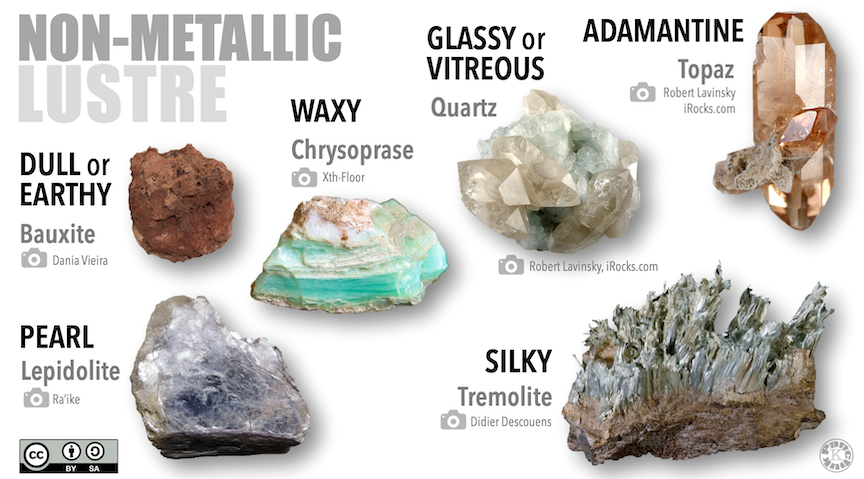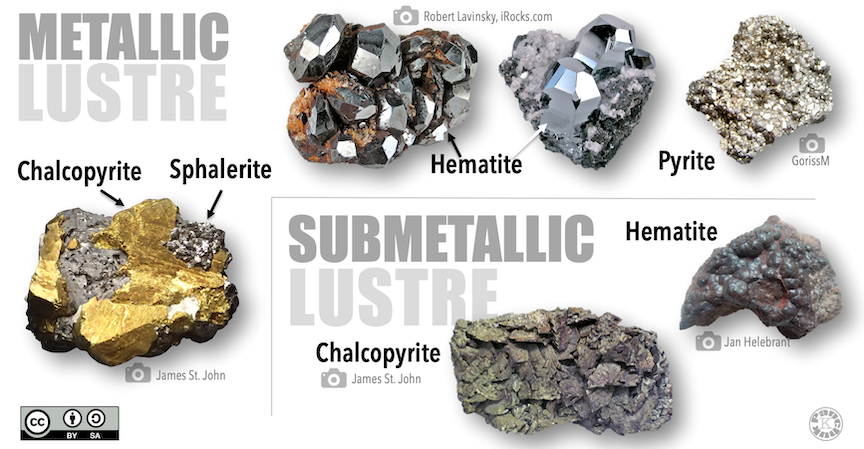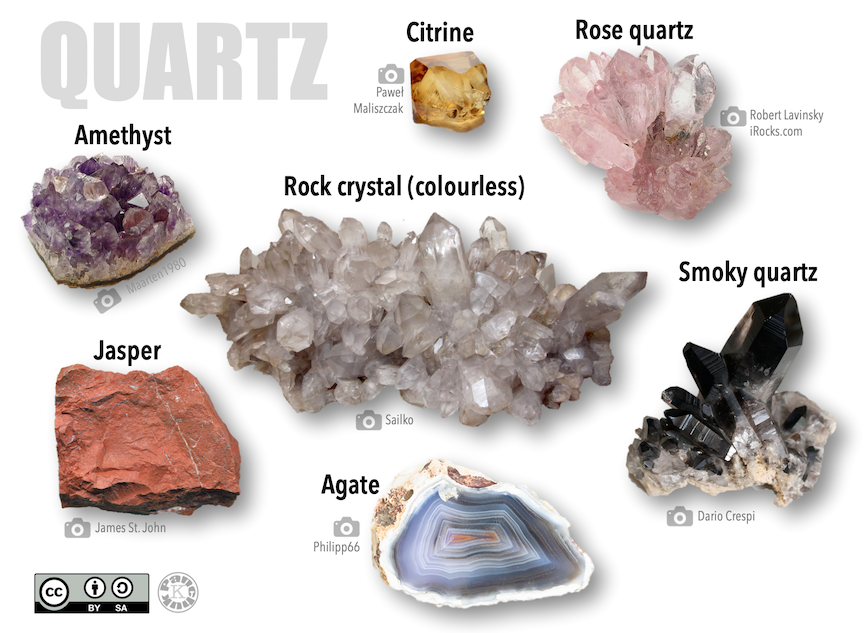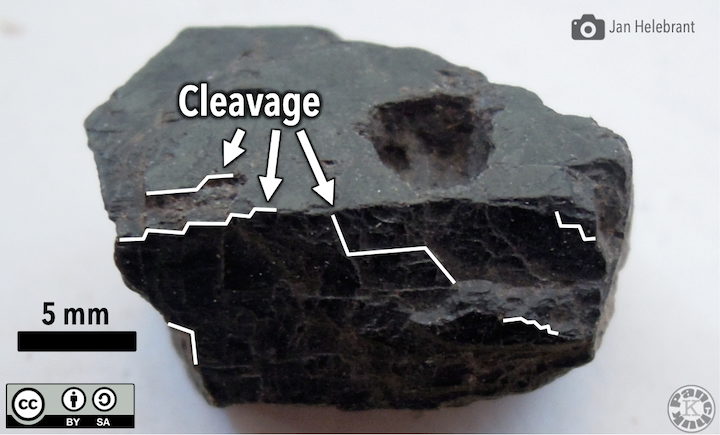Minerals such as quartz have a non-metallic luster. Metallic Looks like metal Waxysilkypearly Has a muted shine Cleavage or Fracture.

Physical Properties Of Minerals Laboratory Manual For Earth Science
Carbonates oxygen and one or more organic compounds.

. Some minerals have lusters that are waxlike or dull. Metallic- shines like metal nonmetallic-most common Hardness resistance to being scratches mohs hardness scale if scratches glass its hard. Muscovite is also called white mica and biotite is sometimes called brown mica or black mica.
The physical nature of a mineral may prevent a correct determination of its hardness. If a mineral has a metallic shine and scratches which of its properties are being measured. Choose the two correct answers.
Common secondary mineral in rocks and soils. One of the most important tests for identifying mineral specimens is the Mohs Hardness Test. Magnetism hardness cleavage luster.
What is the dominant color of the mineral. The streak of a mineral can distinguish minerals with metallic and non-metallic luster. Luster describes the reflection of light off a minerals surface.
Minerals that are opaque and shiny such as pyrite have a metallic luster. A mineral with a nonmetallic luster can be shiny. Oxygen sulfates and one or more nonmetals.
For example cleaned polished pieces of chrome steel titanium copper and brass all exhibit metallic luster as do many other minerals. Red brown to Indian red. Bornite is also called peacock ore because of its coloring.
Copper in Dendritic Habit. One simple way to classify luster is based on whether the mineral is metallic or non-metallic. This will give you a narrow range of the hardness.
Of around 50 metallic minerals just a few make up the great majority of specimens. All other minerals have a nonmetallic luster. Cleavage Or does the mineral have an irregular broken surface.
It is often useful to first determine if a mineral has a metallic luster. There are several ways of describing nonmetallic luster. Talc is known for being the softest mineral on earth.
A fingernail can make scratches in some minerals. Many forms and lusters. Minerals differ in their hardness too.
Does the mineral show regular surfaces or planes. If it scratches glass the mineral is harder than 55. Metal elements include gold silver iron copper lead mercury uranium zinc platinum and aluminum.
Cleavage or Fracture Cleavage - the mineral breaks along at least one smooth. Way mineral reflects light or shine. Micas strongly reflect light and appear shiny.
Streak the color of the powdered. Luster Metallic - If the mineral shines like a metal Non-metallic - If the mineral does NOT shine like a metal Hardness. Many other minerals are nonmetallic.
For instance if a mineral is granular or splintery it may break but appear to be scratched by a mineral much softer than itself. The property of a mineral that is determined by scratching is its hardness. Some minerals have a metallic shine because they contain metal elements.
For example if it scratches a penny but not a glass plate the mineral has a hardness range of between 3 and 5. For example metallic minerals generally have a dark streak whereas non-metallic luster minerals often have. This gallery includes their color streak Mohs hardness other distinguishing characteristics and chemical formula.
They may look glassy silky pearly or even dull. The terms used are pearly glassy silky or dull. Was the mineral attracted to a magnet.
The great majority of minerals with metallic luster are sulfide or oxide minerals. Occurs as flattened crystals massive reniform or stalactitic. So the sentence is true that Mineral luster is broadly classified as either being metallic or opaque.
Scratched by a fingernail- less than 25 6 Breakage. Jonathan Zander Digon3Wikimedia CommonsCC BY 30. All have one strong cleavage and form sheets that you can pick apart with a knife or your fingernail.
Silicon oxygen and one or more metals. A metallic luster means shiny like polished metal. Minerals that shine like metal have a metallic luster.
480 Unit 4Earths Surface Luster A minerals is the way in which light reflects from its surface. It is always advisable when making the hardness test to confirm it by reversing the order of procedure. The metallic-looking minerals are a relatively small and distinctive group worth mastering before you approach the nonmetallic minerals.
Some minerals have such a distinct luster and color that these two characteristics are all you need to identify them. It is number 1 on the Mohs hardness scale and can be easily scratched by a fingernail. The two major types of luster are metallic and nonmetallic.
Talc is not commonly seen in collections as it is usually uninteresting and fairly common although a few deeply colored and crystallized examples are known and well sought after. Which phrase describes the composition of the most abundant mineral compounds on Earth. Quartz for example has a non-metallic shine.
1 Biotite and muscovite belong to a family of platy minerals called mica. The test is useful because most specimens of a given mineral are very close to the same hardness. Mineralogists have special terms to describe luster.
This test compares the resistance of a mineral to being scratched by ten reference minerals known as the Mohs Hardness Scale see table at left. A mineral can be identified by its hardness. The mineral pyrite has a metallic luster.
48 to 53 Many forms and lusters can also occur in sub-metallic to non-metallic forms. For example Talc which is 1 on Mohs scale of hardness is very soft and can. If you cannot see if the mineral can scratch a copper penny then a glass plate and so on up the scale.
The lustre of a minerals surface refers to how it reflects light. An important ore of iron. Standard names for luster include metallic glassy pearly silky greasy and dull.
Minerals with a metallic sheen such as pyrite are opaque and lustrous. That is try to scratch mineral A by mineral B but also try to. But even a knife cannot.
It looks as if it were made of metal. Oxalates oxygen and one or more organic compounds.

Physical Properties Of Minerals Laboratory Manual For Earth Science

Physical Properties Of Minerals Laboratory Manual For Earth Science

Physical Properties Of Minerals Laboratory Manual For Earth Science
0 Comments